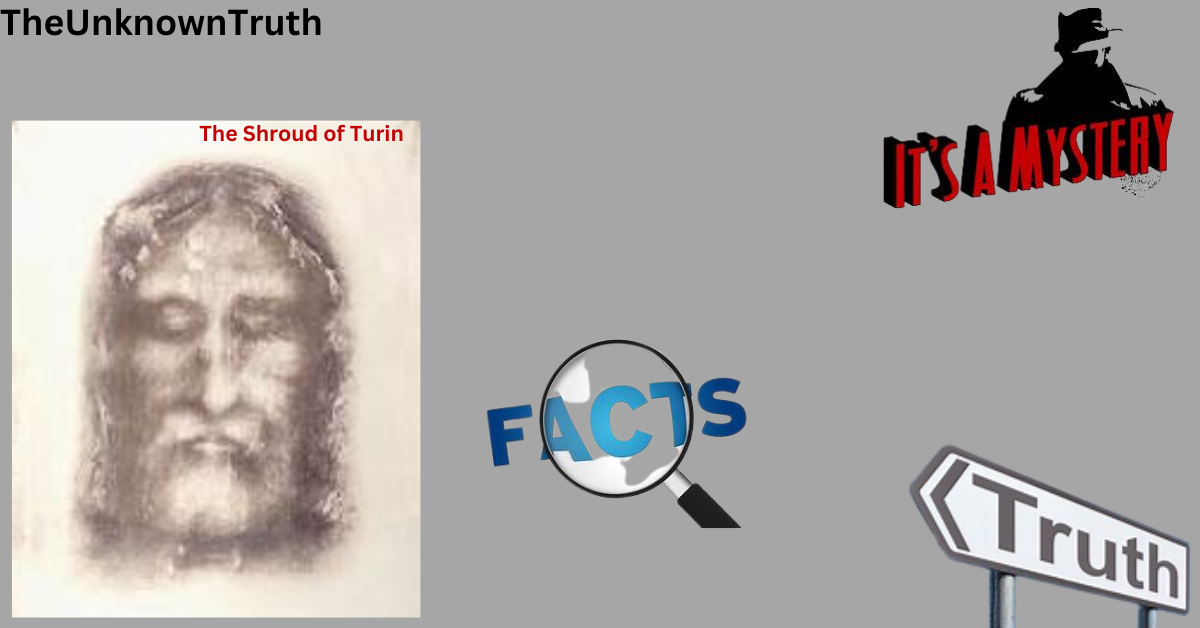The Shroud of Turin, a mysterious and revered relic, has captured the imagination of believers and skeptics alike for centuries. This ancient piece of linen, bearing the faint image of a man, has been the source of intense scrutiny and intrigue. Is it the burial cloth of Jesus Christ or an elaborate forgery? In this blog post, we will embark on a fascinating journey to unravel the mysteries and delve into the intricate details surrounding the Shroud of Turin. Join us as we explore its history, scientific investigations, and the questions that continue to mystify the world.
The Shroud’s Enigmatic Origin and History:
The Shroud of Turin is a 14-foot-long linen cloth, bearing the faint, ghostly image of a man who appears to have endured crucifixion, complete with markings resembling those of Christ’s wounds. It has a long and storied history, shrouded in mystery:
The cloth is believed to have originated in the town of Edessa, in what is now Turkey, before making its way to Constantinople (modern-day Istanbul). From there, it found its way to Europe, eventually arriving in the Italian city of Turin in the 16th century.
The Controversial Image on the Shroud:
The most striking feature of the Shroud is the faint image of a man, front and back, as if he had been wrapped in it after his crucifixion. The image is sepia-toned and possesses unique qualities that have puzzled scientists, theologians, and historians:
Negative Image: One of the most intriguing aspects is that the image on the Shroud is a photographic negative, meaning that the dark and light areas are reversed, much like a photographic negative.
Three-Dimensional Characteristics: Intensive examination of the Shroud revealed that the image contains three-dimensional information, as if it were encoded with the depth and contours of the body it once covered.
Puzzle of the Bloodstains: Bloodstains on the Shroud correspond to wounds consistent with crucifixion and other injuries described in the Bible.
Scientific Investigations:
The Shroud has undergone extensive scientific scrutiny, including radiocarbon dating, image analysis, and more. Here are some key findings:
Radiocarbon Dating: In 1988, radiocarbon dating conducted on a sample of the Shroud suggested a medieval origin, around the 13th to 14th century. This finding caused controversy and raised questions about the Shroud’s authenticity.
Image Analysis: Researchers have used cutting-edge technology like VP-8 image analyzers to uncover the three-dimensional properties of the Shroud’s image, supporting the idea that it might not be a painting or forgery.
Botanical Evidence: Traces of pollen and plants found on the Shroud suggest that it may have been in regions such as Palestine and Turkey, consistent with its supposed journey.
Theological Significance:
For many believers, the Shroud holds immense theological significance:
Representation of Christ’s Passion: They see the Shroud as a powerful visual representation of Christ’s suffering, crucifixion, and resurrection.
Debate on Authenticity: The debate surrounding the Shroud’s authenticity fuels discussions about the historical accuracy of biblical events.
FAQs (Frequently Asked Questions):
1. Is the Shroud of Turin the actual burial cloth of Jesus Christ?
The authenticity of the Shroud remains a subject of debate. While some believe it is the actual burial cloth of Jesus, others maintain that it could be a medieval forgery.
2. How old is the Shroud of Turin?
Radiocarbon dating suggests that the Shroud dates back to the 13th or 14th century. However, the dating results are contentious, and some researchers challenge their accuracy.
3. How was the image on the Shroud created?
The method by which the image on the Shroud was created remains a mystery. Various theories propose everything from an elaborate artistic forgery to natural processes.
4. What does the Catholic Church say about the Shroud?
The Catholic Church has not officially endorsed or rejected the Shroud’s authenticity. It remains a matter of personal belief.
5. Can the Shroud be viewed today?
The Shroud is preserved in Turin, Italy, and is displayed to the public occasionally, although it is typically kept in a protective case.
6: Is the shroud of turin real?
The authenticity of the Shroud of Turin is still a subject of debate, and there is no definitive consensus on whether it is real or not.
7: What is the shroud of turin?
The Shroud of Turin is a linen cloth bearing a faint image of a man who appears to have suffered crucifixion, making it a religious relic believed by some to be the burial cloth of Jesus Christ.
8: Where is the shroud of turin?
The Shroud of Turin is kept in Turin, Italy, and is usually displayed to the public on rare occasions.
9: What about face on the shroud of turin?
The Shroud of Turin bears a faint image of a man’s face, believed by some to be the face of Jesus Christ.
10: Where can I find pictures of the shroud of turin?
You can find pictures of the Shroud of Turin by doing an online image search using search engines like Google or by visiting official websites related to the Shroud of Turin. These images are often available for reference and research purposes.
Conclusion-The Shroud of Turin:
The Shroud of Turin continues to be a source of fascination and contemplation for people around the world. Whether one views it as a sacred relic or an intriguing artifact, the Shroud’s mysteries persist, inviting us to explore the intersections of faith, science, and history. While it may never reveal all its secrets, the Shroud of Turin remains an enduring enigma, reminding us of the enduring power of curiosity and wonder.
